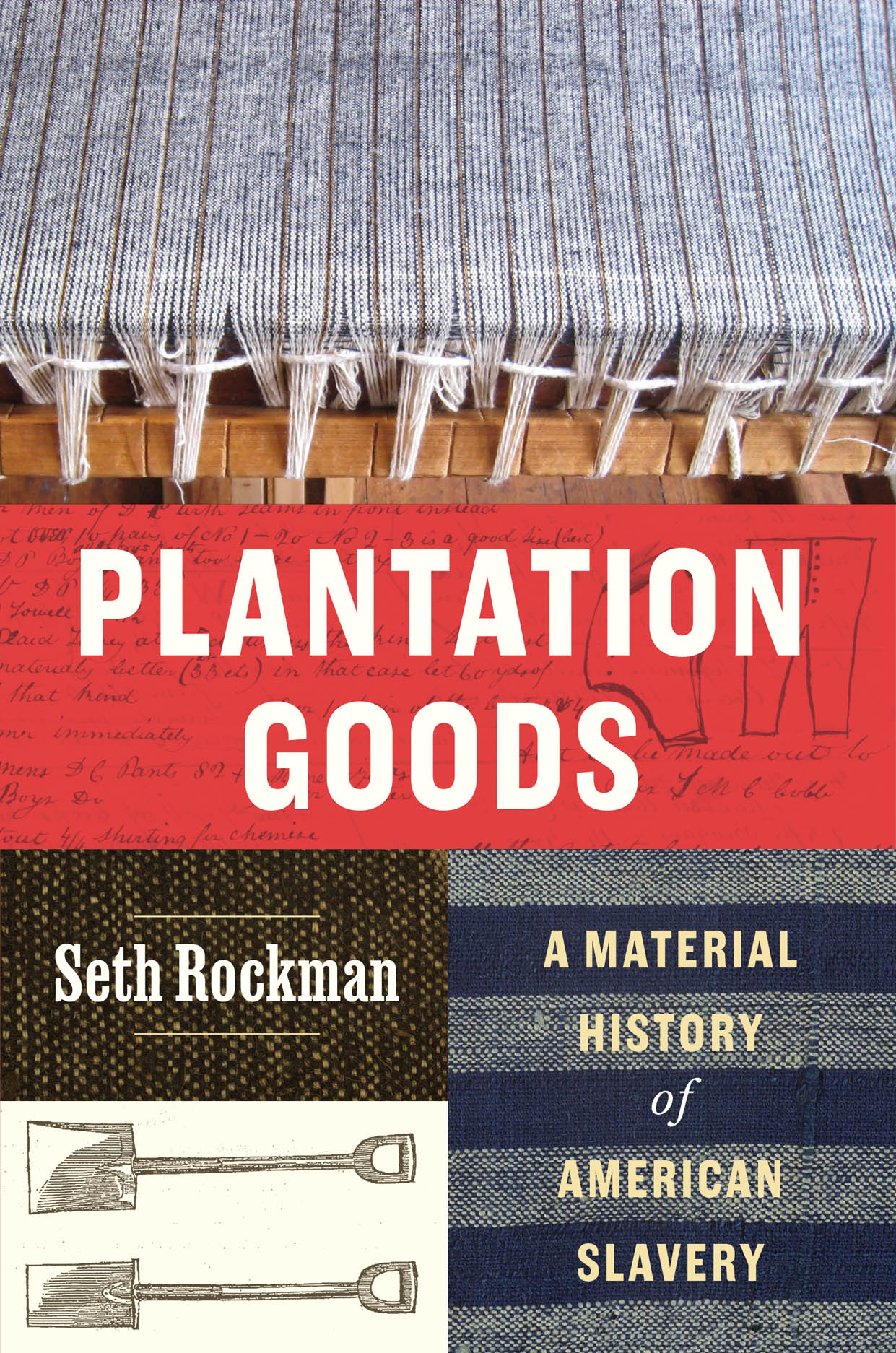Book Review: Plantation Goods: A Material History of American Slavery

 Plantation Goods: A Material History of American Slavery. By Seth Rockman. Chicago: The University of Chicago Press, 2024. Hardcover, 496 pp., $35.00.
Plantation Goods: A Material History of American Slavery. By Seth Rockman. Chicago: The University of Chicago Press, 2024. Hardcover, 496 pp., $35.00.
Reviewed by Tim Talbott
A perusal through advertisements found in many antebellum southern agricultural journals, and newspapers from states where slavery was legal, shows how widespread and commercialized products manufactured specifically for use on plantations were during that era. By offering dry goods such as “Negro cloth,” “plantation axes and hoes,” and “slave brogans,” among many others to planters for purchase, manufacturers—the vast majority of whom operated factories in the free states—ironically helped tie the nation’s economy together despite the ever-growing social and political sectional divides tearing it apart. With Plantation Goods: A Material History of American Slavery, historian Seth Rockman sheds new light on slavery as a powerful economic force by looking at the institution’s producers, middle brokers, and consumers.
The relationship between capitalism and slavery is not a particularly new topic. However, much of the past coverage has focused on slave-produced agricultural market goods, like cotton, sugar, rice, tobacco, and hemp. Other historians have examined the domestic slave trade and its impact on the nation’s economy as the “Cotton Kingdom” began rapidly expanding from the 1820s through the 1850s. And while some studies like Edward Baptist’s The Half Has Never Been Told: Slavery and the Making of American Capitalism (Basic Books, 2014), and Walter Johnson’s Dark River of Dreams: Slavery and Empire in the Cotton Kingdom (Harvard University Press, 2013), blend several of these themes, Rockman keeps his attention on enslaved-intended manufactured goods’ production, distribution, and consumption.
Rockman explains in the book’s introduction that “By following plantation goods from the communities in which they were made to those in which they were used, one sees not merely complicity but contingency—that is, the entangled, dynamic, mutually constitutive relationship between opportunity and oppression, slavery and freedom, the self-made and the slave-made in the American past.” (12) To emphasize each of the product points, Rockman organized Plantation Goods into three parts: “Production,” “Distribution,” and “Consumption.”
Part One includes three chapters, Part Two contains two chapters, and Part Three has four chapters. Each part also contains a brief “interlude” placed between the part’s chapters. Each interlude takes a closer look at a specific item or item-related document that has survived in museum or archival collections. For Part One, the interlude is “The Russet Brogan,” cheap shoes made largely in New England factories specifically for enslaved people’s feet. Part Two’s interlude is the “Negro Cloth Sample,” a swatch of textile used by salesmen to demonstrate the quality and durability of their material or clothing made for planters’ human property. Part Three’s interlude examines “The Newark Whip,” brutal coercive devices manufactured by Shugard and Macknett in Newark, New Jersey, and meant for planters and overseers to punish and enforce maximum output from their work forces. Obviously, the interludes provide some of the author’s best evidence for his arguments.
Additionally, and as Rockman explains in his opening “Note on Language,” “A central argument of this book is that plantation goods played a key role in nineteenth-century race-making. . . .” (ix) Time and again Rockman shows through sourced evidence that products meant and advertised for enslaved individuals and plantation communities received race-related labels, and as such it helped reinforce a difference or otherness between white non-descriptive goods and those categorized specifically for enslaved Black people.
Part One’s Chapter Four, “Wage Slaves” is particularly interesting. In it, Rockman examines those employed in the production of goods intended for plantation use. Whether laboring in a factory setting making axes or cheap shoes, or working at home doing piece work stitching together suits and skirts for enslaved people in the evenings or between housekeeping duties, workers in the plantation good industry often felt they were the oppressed ones. Similarly, depending on their perspectives, operatives often viewed their employers as either in a type of “lord of the loom,” in collaboration with their slaveholder buyers, or if antislavery, being more concerned about the welfare enslaved people far away than their own workers under their noses.
Chapter Seven, “The Fantasies of Provisioning,” which is within Part Three, is likewise thought-provoking. As self-professed providers, enslavers saw themselves in a much different light in that role than did those who they enslaved. As Rockman puts it: “When they gave out clothing, slaveholders insisted they were holding up their end of an implicit social contract. Through plantation goods, they imagined their dominance as benevolence, and expected gratitude. What planation goods bought, however, was not assent but time: another day’s labor, another season’s harvest, another year’s profit.” But planters wanted more, they wanted others to see and believe “that they were the slaves of their slaves.” (223) For enslaved people, plantation goods sometimes allowed them a bit of agency. Primary sources tell us that enslavers complained to themselves and others about their enslaved peoples’ grievances about ill-fitting shoes, cloth that wore out too quickly, axes that did not cut well, or blankets that were not warm enough. Often those choruses of enslaved complaints brought about minor changes that in turn produced an occasional small measure of comfort.
Thoroughly researched and impeccably cited (evidenced by its one hundred plus pages of notes), and just as well-written as it is documented, Plantation Goods: A Material History of American Slavery is a most welcome addition to the historiography of slavery and economics. Academics and lay readers will both find it contents highly informative and its prose equally impressive and approachable.
Excellent review on a subject worth exploring.